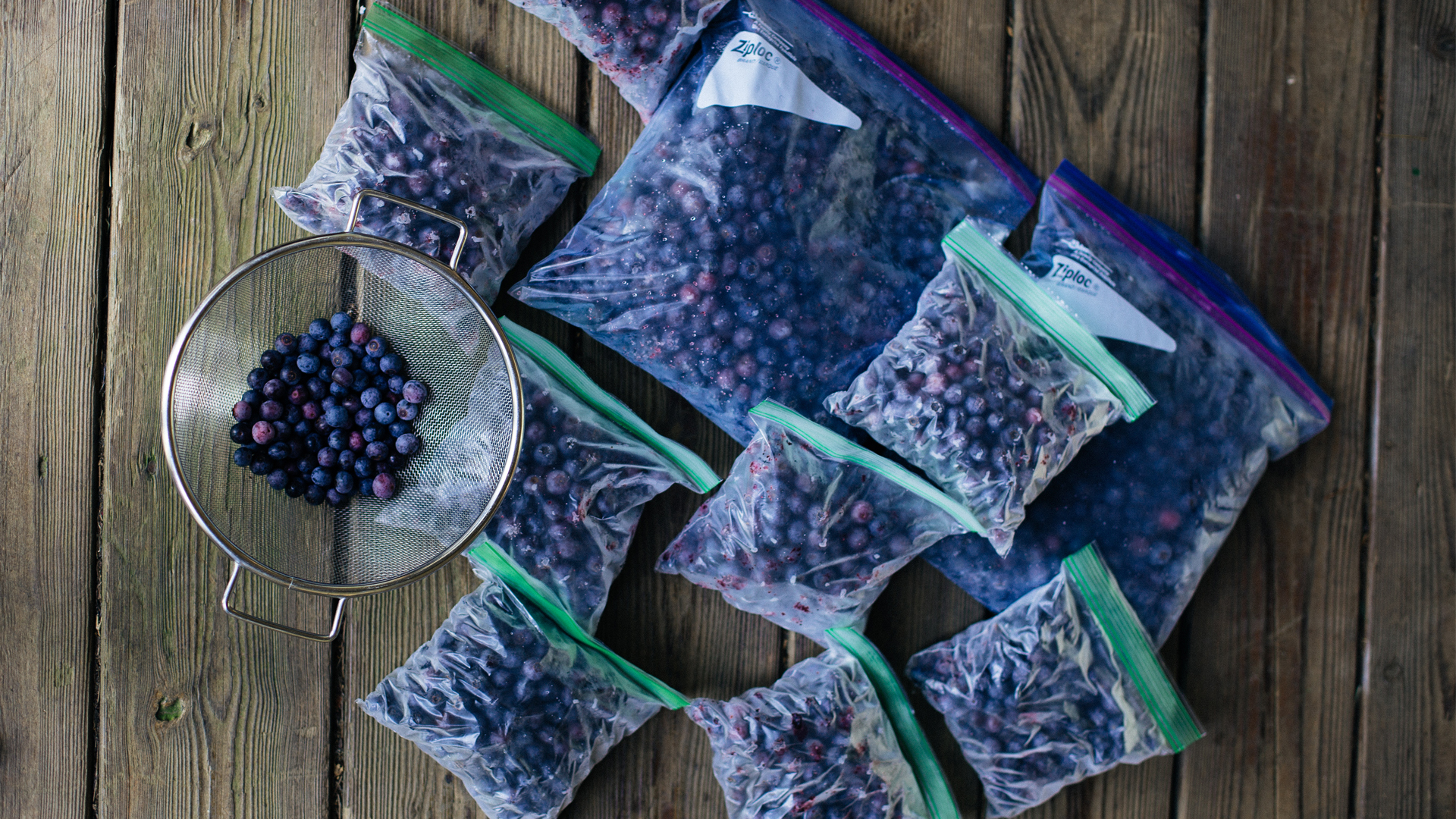How to organize a chest freezer
Our advice on how exactly to organize a chest freezer in order to maximize your space.

Streamline your food stores with our advice on how to organize a chest freezer to perfection, including tips on how to create extra space and prevent overflowing. Whether your chest freezer is your main storage source, or an extra store stashed in your garage, keeping everything organized is the best way to truly take control of your freezing habits and might even save you a few dollars in the process.
Of course, keeping your chest freezer organized will also make your cooking process much easier. With one of the best freezers in your home, you can have ingredients, leftovers, and treats within easy reach, and save yourself from wasting good food. An organized freezer also means you’ll have more space available, meaning you can stock up more of the foods you like and have a good clear out of any things that are out of date.
How to organize a chest freezer: Super-quick guide
- Empty your freezer
- Create an inventory
- Give it a quick clean
- Begin with the bottom layer
- Store meat/poultry in airtight containers
- Use a stacking system dictated by how often you use each food
- Upgrade your freezer with sliding baskets on your upper level
How to organize a chest freezer
The first thing you need to do when it comes to organizing your chest freezer is to get to grips with exactly what you’ve already got in there. If you’re approaching your freezer in a perfect brand new state, then you can just dive right in, but if not, take your time to make an inventory of everything that’s already taking up space.
The best way to do this is to empty out your freezer and create a blank canvas for yourself. If you have another freezer nearby, perhaps within one of the best side-by-side refrigerators, then use this to stash your foods to prevent thawing, or use a coolbox or colder area of your home for temporary storage while you quickly empty it out. It’s definitely best to complete this process before you take a trip to the grocery store, rather than after, to avoid having loads of excess food that might thaw.
Make an inventory of your freezer-stuff as you empty it, either on paper or on your phone. This can just be a rough list for now, but be sure to note things down before you store them away. While you’re there, you might also want to have a quick clean of your chest freezer and banish any rogue frozen peas or built-up ice from getting in your way, using a mild detergent as you go.
Once your freezer is looking in tip-top condition, you can move onto the most important step of this process: getting your chest freezer built into organized layers. Undertaking this strategy is the most effective way to store your food and prevent you from blindly rustling around with your hands plunged into the cold depths of your freezer.

Though it may seem obvious, the bottom layer of your freezer is where you want to store the foods you reach for least. This is most likely large cuts of meat or less used vegetables, though it will entirely depend on eating preferences in your household. This step is also where your inventory will start to come in handy, as it will allow you to map out exactly where your preferences lie. Even drawing a quick sketch of what is going to go where will go a long way in this organizing process.
Sign up to receive the latest news, reviews, buying guides and deals direct to your inbox
If you are storing any type of meat, make sure to contain it within airtight containers of a similar size in this very bottom layer, such as these from Amazon, (these are eco-friendly due to the bamboo lids and more durable with a glass exterior). For your freezer’s system to work, if you’re going to stack these containers, they must be the same size.
If you live in a meat-free household and prefer to keep your foods in their packaging for storage, then these stackable containers with open tops allow for even easier access. Importantly, before you purchase any containers, be sure to check their measurements against your freezer size, so you know exactly how many you can pack in and which are the most economical to opt for given the space you have.
Depending on how busy your freezer is, you might now have a layer or multiple layers of frozen food neatly organized within the bottom of your space. For an extra level of convenience, why not label these containers with large lettering so that you can eye up exactly what you need to grab at first glance. And for ultimate freezer sorting skills, we also like the idea of using a whiteboard above or attached on top of your freezer, like this one, that allows you to make a quick note of what you’ve got inside, as well as what needs to be used up soon, or what you need to grab on your next grocery trip.
The real key to consolidating your freezer as an excellent organizational store is not just within storage containers; the next step involves an extra layer being integrated for maximum coordination. Freezer baskets, such as these extra wide and deep ones from Amazon, are the ideal solution to prevent your space from becoming a hot mess after one rummage. They can be placed on the very top of your chest freezer (with those particular baskets compatible with GE, Hotpoint, Kenmore, and Haier models) and act as a sliding layer for your most essential foods.
Rather than getting bogged down in the rest of your freezer, these baskets are the perfect place for the kind of food you reach for all the time. Whether that’s frozen fruit for your smoothies, vegetables, fries, or ice, it’s likely you’ll be refilling them most frequently. Crucially, if you can get baskets that slide across the top of your freezer, then you’ll be able to move them across more easily to get to the layers underneath too.

How to organize your chest freezer: What to do with oversize items
Undertaking this stacking system combined with the addition of sliding baskets should give you the best chance at expertly organizing your chest freezer. But what about all those foodstuffs that don’t fit perfectly into containers, or risk ruining your layering system?
Well, one solution would be to engineer one of your sliding baskets so that it’s a suitable size for any overlarge items in advance, and have it as a ‘miscellaneous section’. This kind of basket, such as this one from Amazon, might need to be a little larger or wider.
Alternatively, you could section off a part of your freezer with dividers and set up a zone for awkward objects that are entirely separate to the rest of your layering system. Even though this will take up space, it’ll mean that you can still keep the main space meticulously organized, and not have to contend with lifting heavy large objects off of your containers on your trips to the freezer.
If there are more niche items you’re struggling to know what to do with, then it’s worth remembering that there is probably a storage container out there built for just it. Even if you have loose foods that come without containers, then there are plenty of excellent solutions like these pots for keeping them neat. Plus, there are even ways to store your homemade creations in your freezer, like these stackable ice-cream containers.
All in all, the key to keeping your freezer in tiptop condition is keeping a close eye on what you’ve got inside, as well as prioritizing easy-grab space for your favorite food items. For more tips on all things frozen, check out our feature on what temperature your freezer should be or our tips on how long to freeze food.
Molly is the Staff Writer for the Home Section at Top Ten Reviews, joining the team after finishing college. When she's not writing she enjoys baking and embroidery, as well as getting stuck into a good book. She now enjoys writing about kitchen appliances, gardening tools, and will even dip her toe into writing about fridges and ovens.

